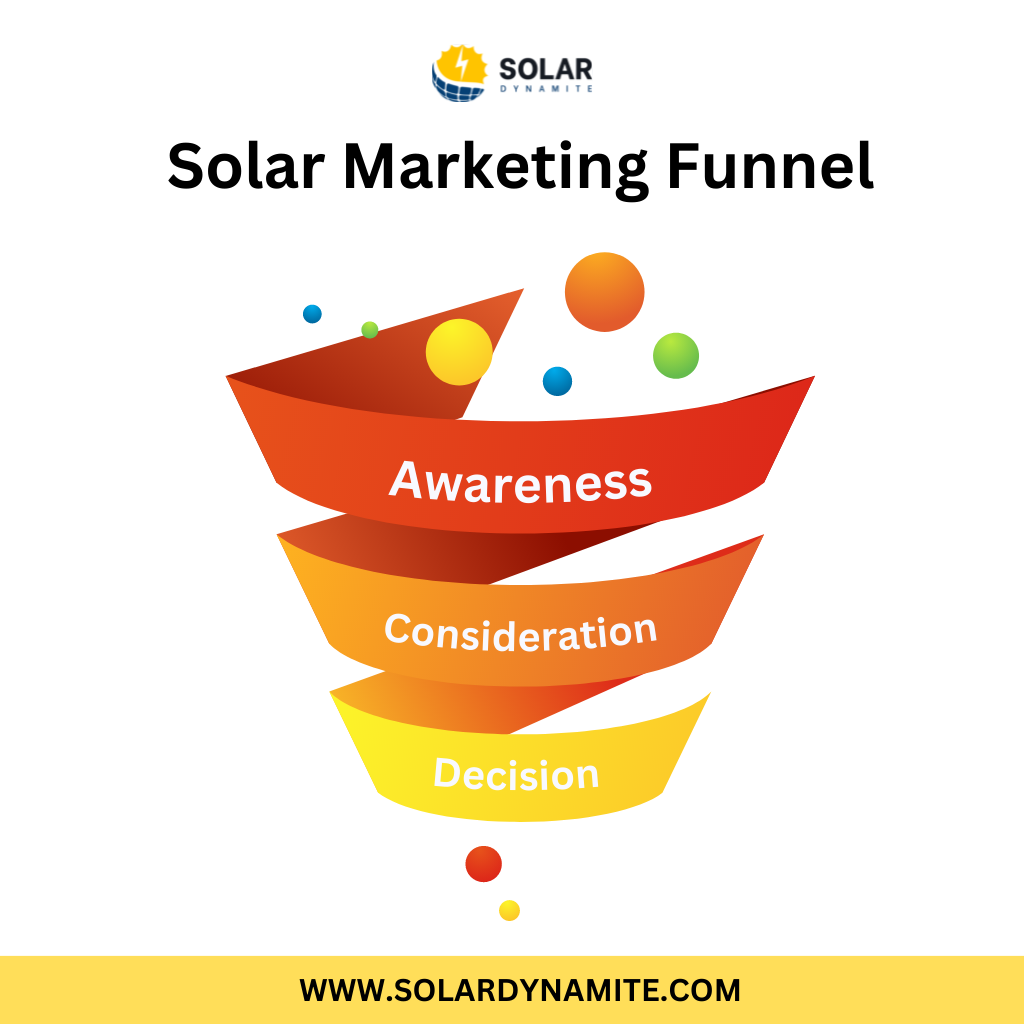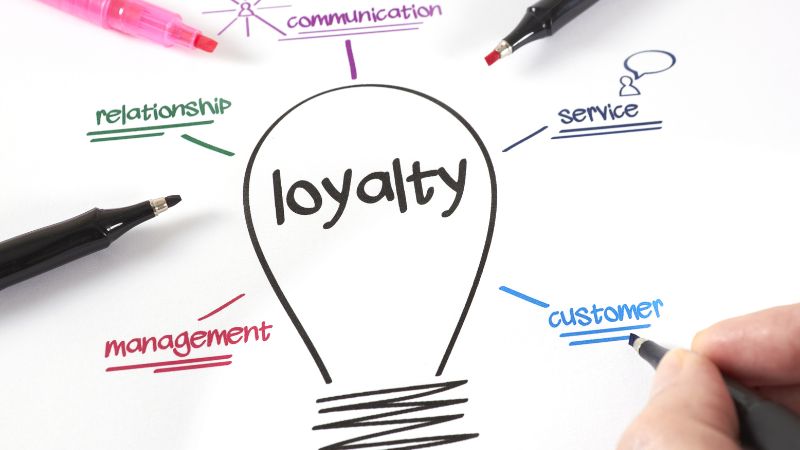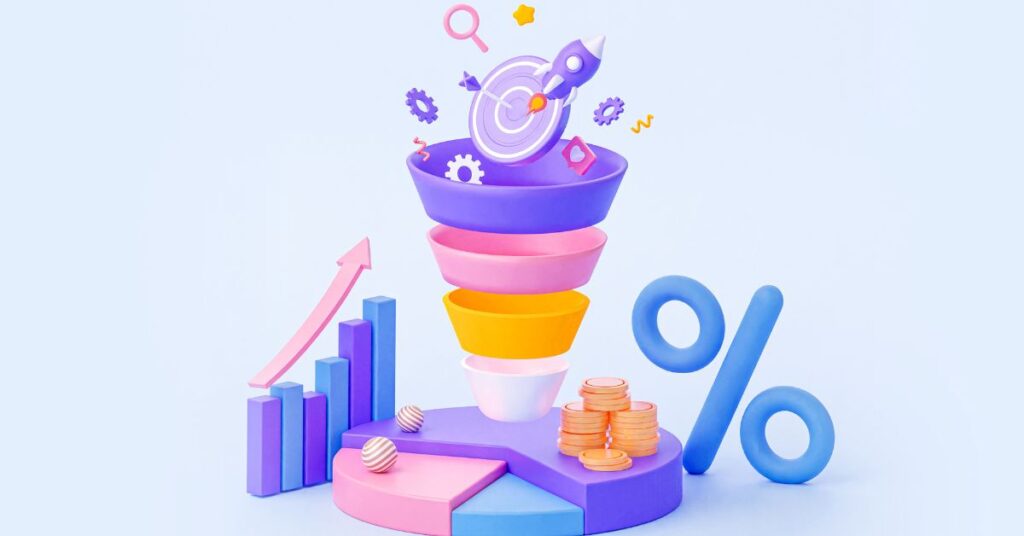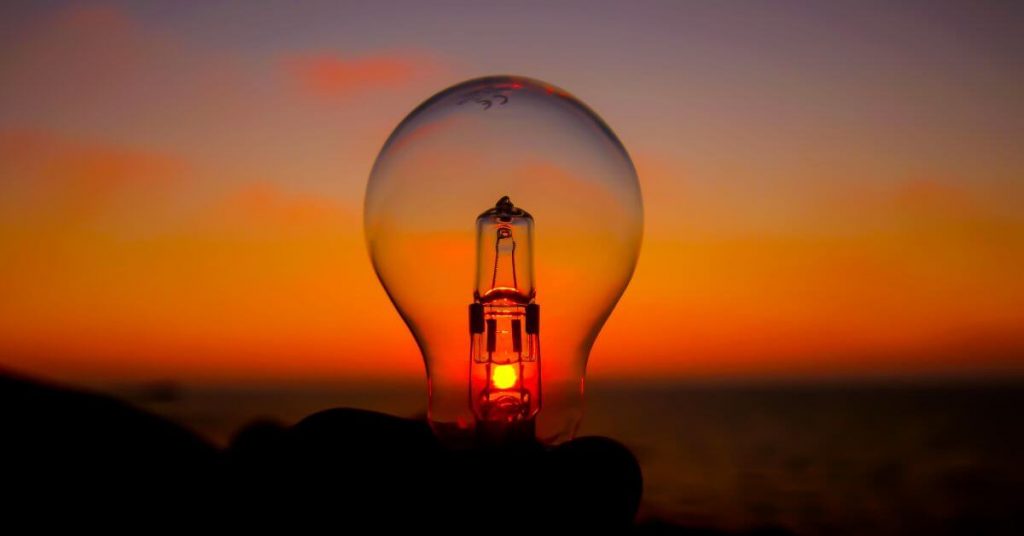Looking for ways to create a solar marketing funnel for your solar business? Then you have come to the right place. Read the blog to acquire consistent solar leads and meet your sales goals in no time.
As more and more people tap into the potential of renewable sources of energy, the demand for solar panels is higher than ever. According to Grand View Research, the U.S. residential solar energy market is expected to grow at a rate of 15% from 2023 to 2030. This creates a lot of opportunities for solar companies to build a name for themselves.
However, amid ever-changing technologies and rising competitive pressure, creating a solar marketing funnel for the solar process is a challenging task. It requires the correct set of solar lead generation marketing strategies, faultless execution, and unfailing monitoring to pour consistent leads into the sales funnel.
Lacking a solar marketing plan or structure would end in zero leads and a bucket full of disappointment. But don’t worry.
I have curated a comprehensive guide to walking you through the step-by-step process of building a well-functioning solar marketing funnel so that every effort you put into it yields potential leads for your solar business.
Key Takeaways
- Understanding your buyer’s persona, such as their pain points and demographics, is crucial before you start designing your solar marketing funnel.
- The solar marketing funnel comprises three stages: Awareness (top), Consideration (middle), and purchase decision (bottom).
- Awareness stage: Educate prospects about solar power benefits, raise awareness about your solar services, and pour leads into your funnel.
- Consideration Stage: Provide more thorough answers to solar prospects’ questions and help choose the best solar panels for homeowners.
- Purchase Decision Stage: Solar prospects are ready to convert into paying customers.
- Post-Conversion Stage: Post-conversion follow-up increases the likelihood of turning them into loyal customers and bringing in more business via word-of-mouth marketing.
- Challenges of the Solar Marketing Funnel: Getting hands on the wrong leads; high upfront cost of solar projects; a lack of knowledge about solar products among the targeted audience.
So, without further ado, let’s get started!
Table of Contents
What is a Marketing Funnel?
A marketing funnel, also known as a sales funnel, provides a roadmap that shows a buyer’s journey from awareness of a product or service to ending up as a paying customer. The funnel represents the customer’s interaction with your brand at multiple levels and thus guides the sales team or marketers to mold their tactics according to them.
Example of Marketing Funnel
You run a solar company, and a reader lands on one of your blogs, likes your solar products, contacts your support team by filling out the contact form, and finally ends up buying your solar installation package. So, this whole process,
Blog > Contact Form > Conversion (buying a PV installation package) is an illustration of a marketing funnel.
Why can solar marketing funnels be complex?
The whole concept of solar marketing funnels is not as easy as it seems or as simple as it sounds. The reason is that, depending on the business models, solar marketing funnels have different structures or stages.
Here is a brief explanation of why a sales funnel can create complexity:
- In addition to blogs, there are a wide array of marketing channels, including paid advertisements, social media platforms, search engine optimization traffic, and more.
- Understanding the pain points of every customer. For instance, a person looking for cosmetic products may have different requirements from someone who is looking for electronic gadgets.
- Each customer has a different level of awareness of your solar company. For instance, some might even be aware of your services but are looking for alternatives, whereas others might not even have heard of your brand.
Analyzing any of these factors in depth is a difficult undertaking in and of itself. So, measuring the complexity of a solar marketing funnel is something I can’t even put into words.
This is why most businesses have multiple marketing funnels, each for monitoring the leads coming from different sets of platforms.
What is a Buyer Persona?
Before jumping into the stages of the marketing funnel, it is crucial to understand the term “Buyer Persona” and why it holds importance for your sales funnel.
A buyer persona, often interchangeably called a customer persona, is an in-depth research project about your targeted audience. Buyer personas help you learn about their demographics, the culture they belong to, the day-to-day challenges that impact their purchasing behavior, and the types of marketing channels they use for shopping.
It is normal to have multiple buyer personas for a solar business. How?
Let us understand you an example.
Imagine that you are selling your solar panel services to an end-user who further seeks the approval of others to make a final call; every person involved in making this decision is a separate buyer persona in itself.
The Importance of Buyer Personas for Your Solar Marketing Funnel
Understanding a buyer persona at its core enables you to fill your solar marketing funnel with high-quality prospects, which lowers the cost per action for each reliable solar lead. The additional benefits are as follows:
Targeting your potential audience
A buyer persona includes all the details of your prospects, including their financial status, requirements, age, end goals, and pain points. By knowing detailed information about your customers, you understand them better and can mold your solar marketing strategies according to them.
Providing a personalized experience
Each buyer has different needs and objectives. With the aid of buyer personas, you can provide them with a personalized experience at every stage of the sales funnel. This includes actionable landing pages, robust customer support to help them with their queries, and sending emails at the right time.
Boosting customer engagement
Knowing your customer from the core helps you build content that sounds relatable to them. Thus, it helps boost overall engagement and the likelihood of conversion rates.
Streamlining your solar marketing strategies
Shifting your marketing focus to your targeted audience will help you save unnecessary efforts on those who are not.
Stages of a Solar Marketing Funnel for Your Business

Have you ever used a plastic funnel to pour oil? If so, you would be aware of how a funnel enables you to pour the oil directly into the container rather than splattering it all over the area.
Exactly like this, a solar marketing funnel operates. You will locate the list of committed purchasers for your solar business when you descend from the broadest section (at the top) to the narrower section (in the middle) to the narrowest (at the bottom).
That is why a solar marketing funnel is a must for any solar business. It guides you in understanding the customers’ psychology, spares you from needless hassles and headaches, and ultimately helps you generate more leads.
Having said that, let’s dive into the stages of a solar marketing funnel for your solar business.
Awareness and Interest (top of the marketing funnel)

Realizing that you need solar panel services for your home is the very first step in the buying process, and that’s exactly what this stage is meant for.
The objective of this stage is to create awareness among prospects about your solar power system by listing the benefits (such as savings on power bills and creating an extra source of income via solar credits) and persuade them to opt for your solar services, thus pouring more leads in your solar marketing funnel.
And for that, ask yourself the following questions:
- How will the customers find your solar business – via advertisements or content marketing?
- How will you engage with them if they are coming from ads (Google, Bing, or social media)?
- How will you engage with them if they are coming from content marketing?
Here is a glimpse of what the solar conversion of your marketing funnel would look like:
- Following the ad > action-oriented landing page (sign up for a webinar or buy the service)
- Reading the education article > following the backlink to your site.
Once you know the channels the traffic is coming from and the kind of content they like to interact with, you can start molding your strategies as per them.
Always remember that the key is to create awareness among your target audience about solar power, how it can help them meet their goals, and how a solar panel installation service provider like you can help them.
So, choose whichever kind of content they want, be it blogs, videos, webinars, or social media feeds, as long as they engage with them.
Pro Tip: Integrate the keywords related to solar panel services and the pain points in your content. It will help both the search engine and your audience better understand it.
Moreover, bear in mind that you would like to pour maximum leads at this stage of your funnel, as the number surely keeps on decreasing as you move down the funnel.
Add the following solar marketing funnel strategies to optimize the awareness stage:
Since the aim of this stage is to spread more and more awareness about the solar energy system and your solar products among prospects, here is what you can do to achieve that:
- Drive more traffic to your site using social media marketing campaigns and advertisements.
- Take advantage of influencer marketing, which will share words about your solar services with a niche audience.
- Plan a contest and hold giveaways on your social media feed to attract solar customers’ attention. Participants will be encouraged to take part, and your brand will gain additional online visibility.
- Optimize your blogs, provide valuable and educational content to your readers, and drive organic traffic to your website.
- SEO for solar companies is crucial to attracting leads. To rank higher in SERPs and let more solar prospects locate you, optimize your complete website in accordance with the search engine rules. For instance, incorporate backlinks that will increase the trustworthiness of your site, employ meta tags, add relevant keywords, and include crystal-clear CTA buttons as well.
Consideration (middle of the marketing funnel)

At this stage of the solar marketing funnel, customers are fully aware of your solar products and are genuinely interested in them. However, now they are contemplating whether or not they should make a purchase.
Now they want to dig a little deeper into the information they have received via your ads or blogs. Here are the possible questions that might be arising in their minds:
- What kind of solar panels would be suitable for my home?
- What would be the pros and cons attached to them?
- What would be the total cost of the solar panel project?
- Why should I choose this company?
Trust me, the customers never made an instant decision. They always look for vendors that can provide them with the best solar panel services at the most affordable price. This is why they look for multiple websites, and if you are lucky enough that they remember your website from whichever content they read, chances are they are going to opt for your services.
And for that reason, at this stage, you must always reassure your prospects that you are the best solar service provider in their location at this point. The values you provide are unmatched, and you are always ready for after-installation maintenance services. With you, their money is safe and wisely invested. To better reassure them, offer them a free solar consultation with one of your sales representatives and clear all their doubts.
After using all of your solar marketing strategies, if your customer is still not ready for buy intent, they will quickly depart the funnel; but, if they are, congrats – the customer is now prepared to proceed to the next phase of your solar marketing funnel.
Add the following solar marketing funnel to optimize the consideration stage:
Since the aim of this stage is to encourage customers to engage with your content and not leave your funnel, here is what you can do to achieve that:
- Add testimonials to your site and show in detail how you helped your previous customers save on their power bills.
- Ask your clients to leave a review on your site so that you can use them as social proof for your new customers.
- Offer the prospects a free consultation or a site inspection.
- An influencer’s upload of a trial solar panel installation from your company video typically generates more traffic faster.
- Provide free e-books to your customers with detailed information on how your solar panel products can help them cut down on their expenses.
- Take advantage of email marketing solar lead generation strategy and send personalized solar panel plans to your customers.
- Invest in the right CRO (conversion rate optimization) strategies and ensure that every page of your website directs your customers to the appropriate service page.
Purchase Decision (bottom of the marketing funnel)

If the prospect manages to reach this stage, then, good news, they have a serious intent to buy solar services from your company. Thus, they would like to take more direct approaches rather than burdening your team with questions.
For instance, the customer might ask for a free quote, an on-call consultation, a demo (which can be shown with a short-format video), or a testimonial from a client where you have installed the panels.
So, have transparent communication with your potential customer, address their problems, and illustrate the solutions so that the end-user can understand how it’s going to help them.
Furthermore, optimize your site to maximize conversion rates. And make the final move with money-back guarantee offers if they find themselves in any solar panel-related problems within the given period.
This is a very important and the last stage of your solar marketing funnel; thus, make sure you put your best foot forward and manage to convince the customer to make a purchase and close the deal.
Add the following solar marketing funnel to optimize the decision stage:
Since at this stage, only the high-buy-intent leads are there, all you need to do is give them a little nudge to close the deal, and here is what you can do to achieve that:
- Provide limited discount offers on your solar services. This creates a sense of FOMO about great deals among the customers, making them more likely to make a purchase.
- Retargeting the customers that have once contacted you for your services Address their concerns, come up with effective solutions, and convert them into final sales.
- To reassure your customers, you can offer a pay-per-performance costing model.
Earn Loyalty: Post Conversions

If you are thinking that your work is done with making your customers buy your services, then you are mistaken, like some other like-minded marketers. Post-sale follow-up is as important as customer acquisition for your solar marketing funnel.
Anyone who has been in this industry for a significant period of time knows the importance of building a long, harmonious relationship with customers.
For instance,
If your new customers are content with the services you provided throughout the process, including your assistance, the solar products, and after maintenance, they are more likely to come back to your business for other services and turn into devoted clients. Not just that, they are more likely to spread good words about your company and draw new clients to your establishment.
On the other hand, they are more likely to disseminate unfavorable opinions about your business and won’t suggest it to anyone in their circle if they experience any level of disappointment after receiving installation services from your company. Additionally, this will help your rivals, hurting you by maybe losing some leads.
This is why a lot of businesses are considering the after-purchase stage as one of the most important stages of their solar marketing funnel strategies. They know the importance of repeat customers for their business and thus put great emphasis on resolving any problems or errors that arise with their products.
Below are the following ways to help your customers after purchase:
- Create an FAQ section.
- Make it simpler for customers to contact your helpline by creating a CTA button.
- Encourage your previous customers to review your services on Google.
Challenges of the Marketing Funnel in Solar Lead Generation
To ensure that your solar marketing funnel is a success, there are challenges that you need to address first, and here they are:
Not getting quality leads
Pouring some random customers into your funnel will only waste your time and efforts and land you nowhere. The quality of the leads increases the likelihood of a conversion rate.
Getting hands on the same prospects
Another challenge that most solar companies face these days is getting their hands on the same leads. For instance, the same customer might have contacted you and your competitors. Thus, the earlier you land that prospect in your solar marketing funnel, the better it will be for your business.
Unawareness of how solar panels work
Many customers don’t have the knowledge of the functioning of solar panels or the patience to wait for the fruits of solar energy. They want immediate results, which is again not possible.
High upfront costs
Everyone wants to save big, but when it comes to investing in solar projects, customers tend to take a backseat. The reason is the high upfront costs, which is the sole reason for their discouraging the installation of a solar power system on their property.
Final Words
It takes work to design and construct a strong solar marketing funnel for a solar business. It is a continuing process with the appropriate set of solar marketing strategies, in-the-moment executions, and post-purchase relationships with the customers.
If you are able to put it into practice successfully, the moment will soon come when your funnel will be filled with a steady stream of high-quality leads and you will close more sales.
And the aforementioned guide will assist you in creating a solar marketing funnel for your solar business that is appropriate and assist you in quickly hitting your sales goals.




